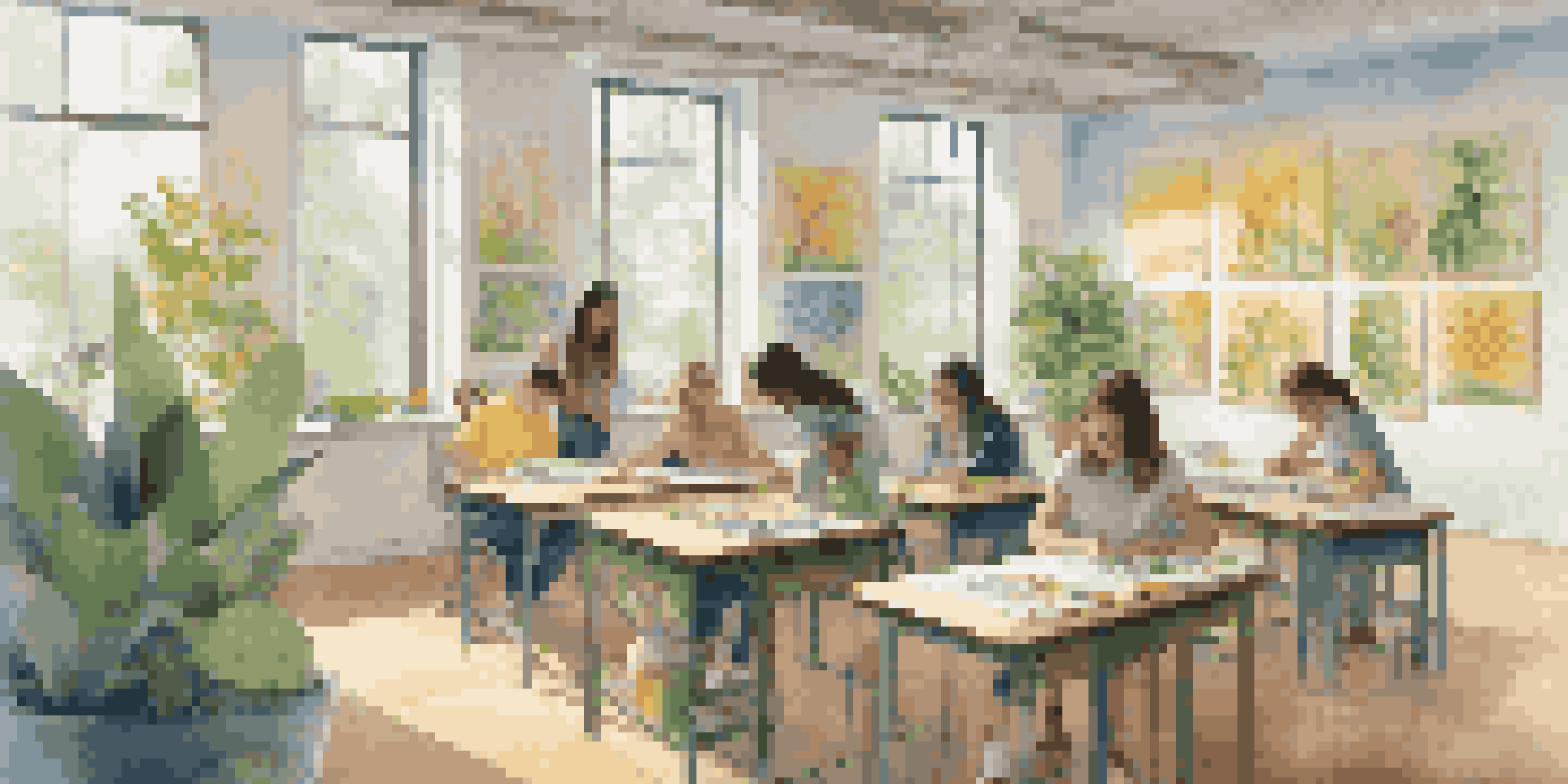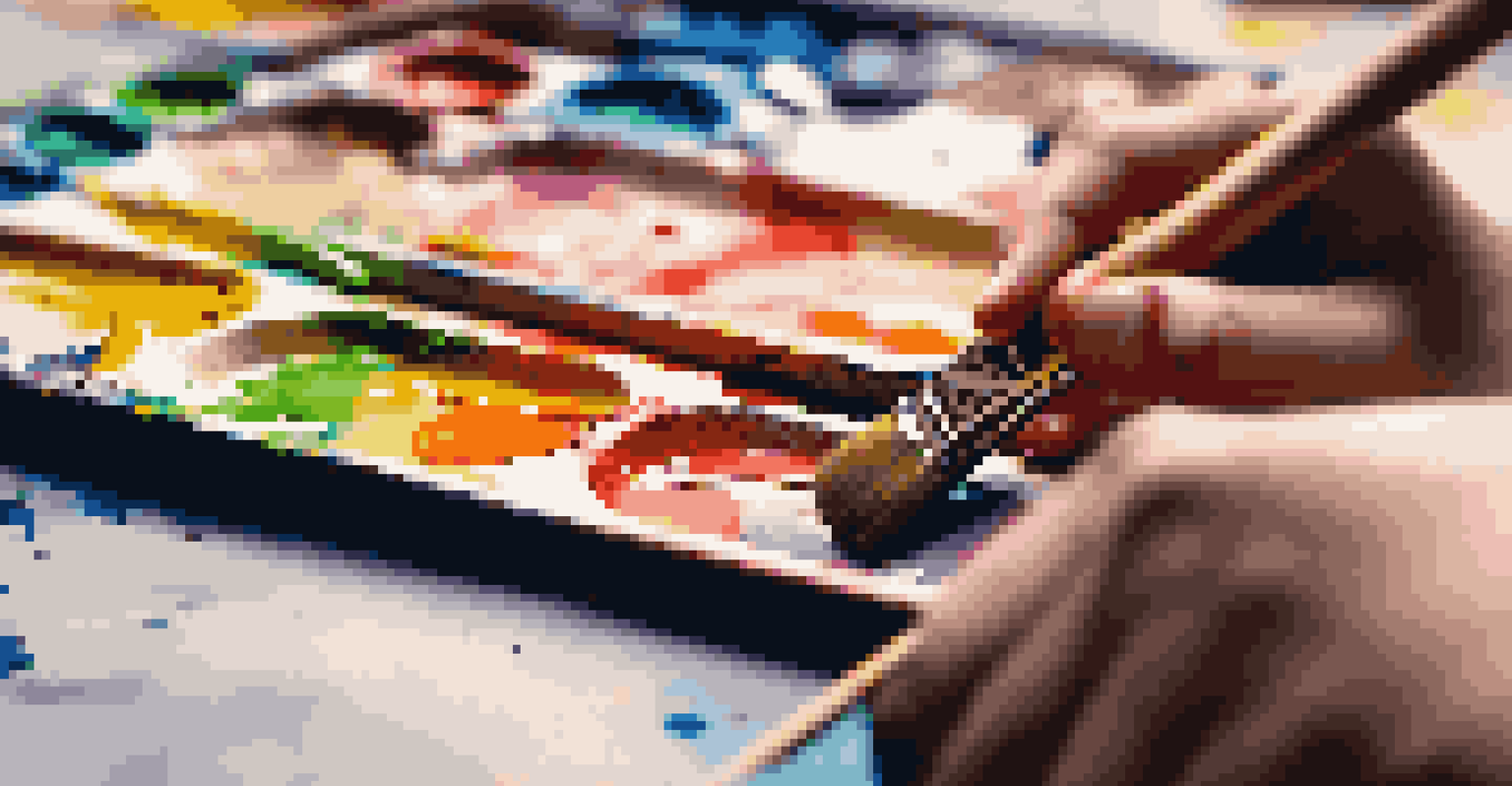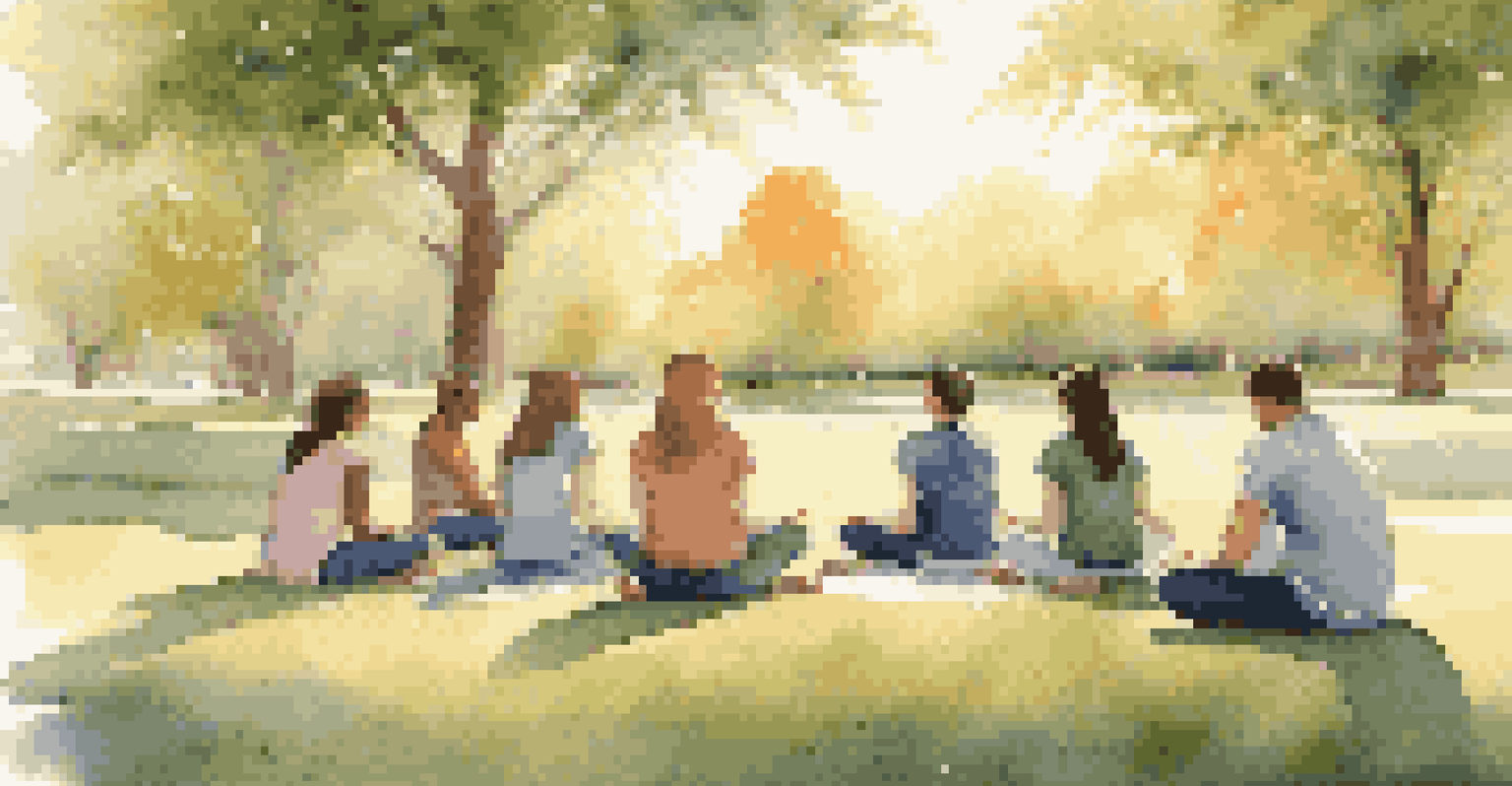Mindfulness and the Arts: Creative Expression in Education

Understanding Mindfulness in the Context of Arts Education
Mindfulness is the practice of being present and fully engaged in the moment. In the context of arts education, it encourages students to focus on their creative processes rather than outcomes. This shift can help reduce anxiety and foster a deeper connection with their work, allowing for genuine expression.
Creativity requires the courage to let go of certainties.
When students practice mindfulness, they learn to appreciate the nuances of their creative endeavors. They can explore their thoughts and feelings without judgment, which enhances their ability to create art that is authentic and meaningful. This approach not only nurtures creativity but also promotes emotional well-being.
Integrating mindfulness into arts education can transform the classroom into a space where students feel safe to express themselves. It shifts the focus from competition to collaboration, empowering young artists to share their ideas freely and support one another in their creative journeys.
The Role of Creative Expression in Personal Development
Creative expression through the arts plays a crucial role in personal development. It helps students articulate their emotions, thoughts, and experiences, which can be particularly beneficial during challenging times. Art serves as a powerful outlet for self-discovery and healing.

For many students, engaging in creative activities fosters a sense of identity and belonging. They can explore various art forms—be it painting, music, or dance—each providing unique ways to express their individuality. This exploration can lead to increased self-esteem and confidence.
Mindfulness Enhances Creativity
Incorporating mindfulness techniques in arts education fosters a relaxed state of mind, essential for inspiring creativity.
Moreover, the process of creating art encourages critical thinking and problem-solving skills. Students learn to navigate challenges, make decisions, and reflect on their choices, all of which contribute to their overall development as individuals and as artists.
Mindfulness Techniques for Enhancing Creativity
Incorporating mindfulness techniques into arts education can significantly enhance creativity. Simple practices such as breath awareness, guided imagery, or body scans can help students center themselves before engaging in creative tasks. These techniques foster a relaxed state of mind that is conducive to inspiration.
The mind is everything. What you think you become.
For example, before starting a painting session, students might take a few moments to focus on their breath and visualize their creative intentions. This practice can help clear mental clutter and open the door to new ideas and perspectives. Mindfulness encourages a state of curiosity, essential for any artistic endeavor.
Additionally, regular mindfulness exercises can help students develop resilience. They learn how to navigate creative blocks or frustrations without becoming overwhelmed, allowing them to maintain a positive attitude towards their work.
Creating a Mindful Environment for Artistic Expression
Establishing a mindful environment in the classroom is crucial for fostering artistic expression. This can be achieved through thoughtful classroom design, incorporating calming colors, natural light, and spaces for quiet reflection. A supportive atmosphere encourages students to explore their creativity without fear of judgment.
Teachers can set the tone by modeling mindfulness practices and encouraging students to engage in mindfulness breaks throughout the day. These breaks can help reset focus and energy, making the creative process more enjoyable and productive. When students feel comfortable, they are more likely to take risks in their art.
Art as a Tool for Personal Growth
Creative expression through the arts helps students articulate emotions and fosters a sense of identity and belonging.
Moreover, creating a community of support among students is vital. Encouraging collaboration and peer feedback can enhance the sense of belonging and collective creativity, making the arts a shared experience rather than a solitary one.
Benefits of Mindfulness in Arts Education
The benefits of combining mindfulness with arts education extend far beyond improved creativity. Research indicates that mindfulness can lead to reduced stress, enhanced emotional regulation, and greater overall mental health. For students, this means a more fulfilling and balanced educational experience.
Additionally, students who practice mindfulness are often better equipped to face academic challenges. They develop focus and concentration skills that can improve their performance not just in the arts but across all subjects. This holistic approach to education nurtures well-rounded individuals.
Ultimately, the integration of mindfulness into arts education cultivates a generation of thoughtful, creative thinkers. These skills are invaluable in navigating the complexities of the modern world, preparing students for both personal and professional success.
Case Studies: Successful Mindfulness in Arts Programs
Several educational institutions have successfully implemented mindfulness practices in their arts programs with remarkable results. For instance, a school in California introduced mindfulness workshops alongside their visual arts curriculum, leading to increased student engagement and creativity. Teachers reported a noticeable shift in students' attitudes towards learning.
Another example can be found in a music program that integrated mindfulness meditation before rehearsals. Students shared that these sessions helped them manage performance anxiety, allowing them to fully immerse themselves in their music. This not only improved their skills but also enhanced their enjoyment of the art form.
Supportive Environments Matter
Creating a mindful and supportive classroom environment encourages students to explore their creativity without fear of judgment.
These case studies illustrate the transformative power of mindfulness in arts education. By prioritizing mental wellness and creative expression, schools can create enriching environments that foster both artistic talent and personal growth.
Future Directions for Mindfulness and Arts Education
Looking ahead, the integration of mindfulness in arts education appears promising. As educators and researchers continue to explore its benefits, we may see even more innovative approaches to incorporating mindfulness techniques into curriculums. This evolution could enhance both teaching methods and student experiences.
Future programs might include interdisciplinary collaborations, blending mindfulness practices with technology and digital arts. By embracing these advancements, educators can reach a wider range of students and cater to diverse learning styles. This adaptability is essential in today's fast-paced world.

Ultimately, the goal is to create a holistic educational framework that nurtures the mind and spirit through the arts. By continuing to prioritize mindfulness, we can empower students to become not just better artists, but also compassionate and self-aware individuals.